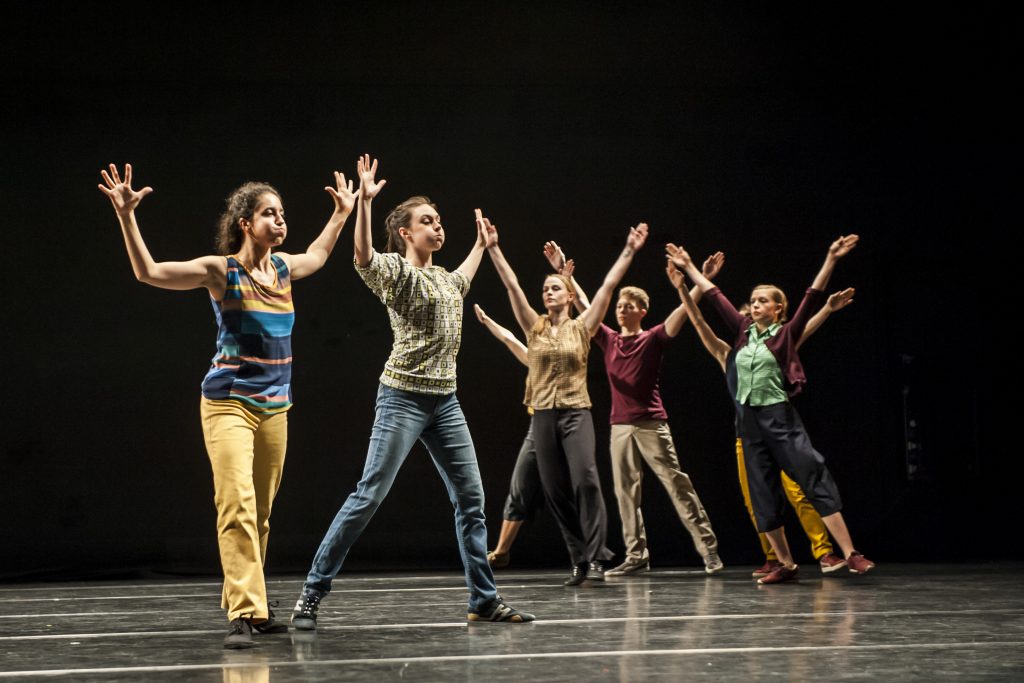
The fourth in a series of blog posts featuring projects that I love and what makes them so important to me, focuses on my work with choreographer and filmmaker Yvonne Rainer. As a dancer, assistant to and a living archivist for Yvonne I have traveled extensively performing, teaching and lecturing about her work – primarily her iconic piece Trio A (1966) and, more recently, her structured improvisational work Diagonal and Talking Solo from Terrain (1963). What I have found most prominent and compelling about sharing her work with others in places within the US, EU, UK and SE Asia is its ability to collapse and challenge hierarchical structures and embrace complexity and not knowing – all useful to my interest in working with human movement, public space, belonging and connection.
The improvisational score that makes up the dance she titled Diagonal is made for a group of 10 performers and includes a series of numbers and letters called out by individual performers randomly during a timed 15-minute duration. These calls produce differing combinations of movement sequences that are then executed by the group. For example, if a performer calls out ‘one’, the group walks across the space. When someone calls out ‘A’ the performers do a memorized movement, also across the space, on a diagonal line. There are options to divert the calls, stop and ‘randomly walk’, producing a myriad of combinations of choreographic structures and, more importantly, differing and ever changing roles and positions in the space. Each dance is different. There are never any fixed roles and the usual hierarchy of classical dance, where solos, duets and chorus are known in advance and signify some dancers as more ‘important’ than others, are thrown out the window. In Diagonal, anyone can be a soloist, form a duet or move as a chorus – yet none of those roles are known or able to be predicted and nothing stays the same for very long.
This form of rotating leadership and invite to step into differing roles at any given time and to them leave them and allow others to do the same is a form of democratic, collective decision making that can be found in Quaker and 12-step meeting rooms but, rarely, in my experience in the world of dance.
Articles recently on how dance and choreographic practices can be examples of shared leadership at Dance’s Communal Ethos Is Moving Into the Office and Boardroom
Another area of interest I have in teaching, performing and lecturing on Rainer’s work is her use of juxtaposition and the multitude – not settling on one thing but allowing many movements and roles to happen at once and that are not predictable nor, sometimes relate in logical ordering or sequence.
Her choreographic forms and methods are tools and a means of experiencing democratic and new possibilities.
I am currently available to engage in the performance, lecturing, and workshoping of Rainer’s work and to engage this thinking through dialogue with others. Reach out for a chat!
And example of recent work can be found below:
Performing Trio A as part of a workshop at Palazzo Grassi in Venice, Italy (2018)
Thanks for reading.
Sara
…
Written sources
http://www.ravenrow.org/texts/59/